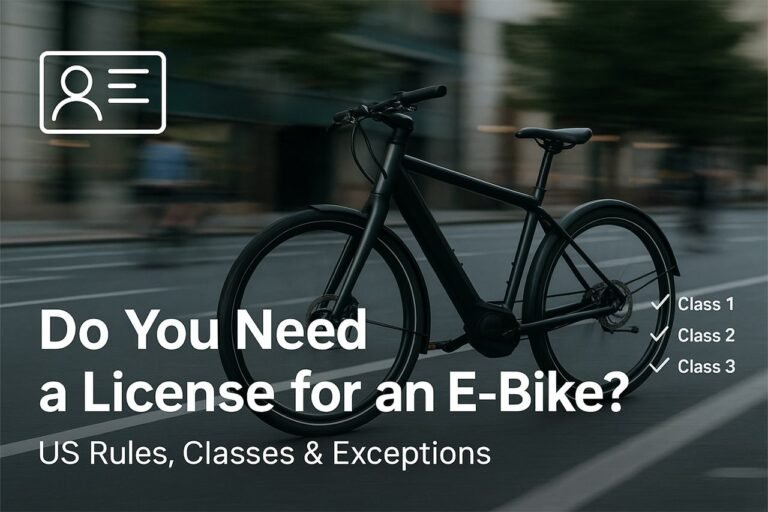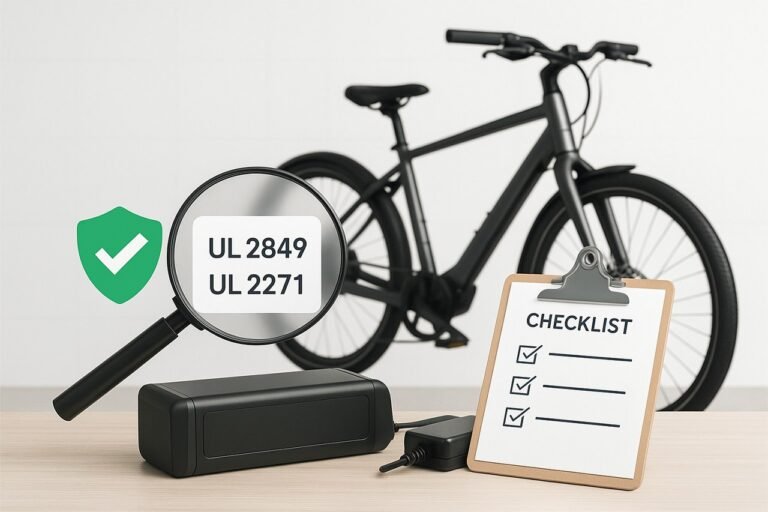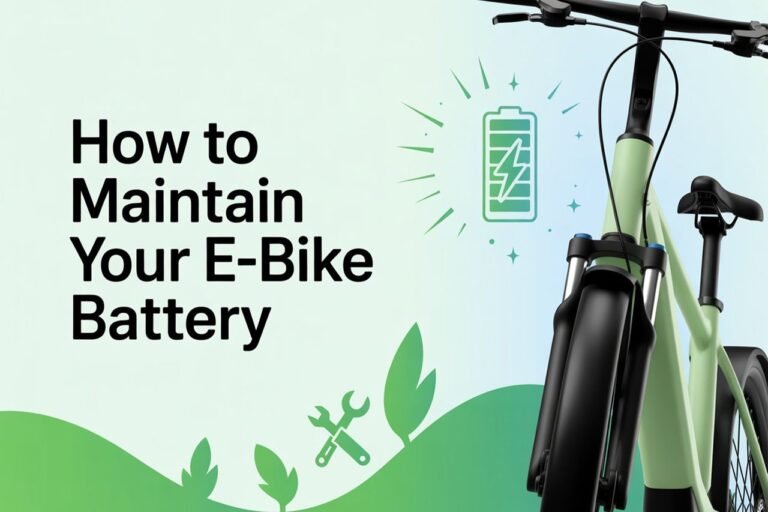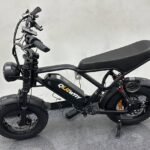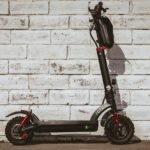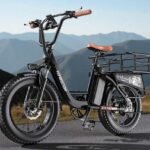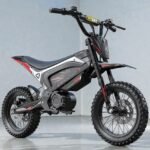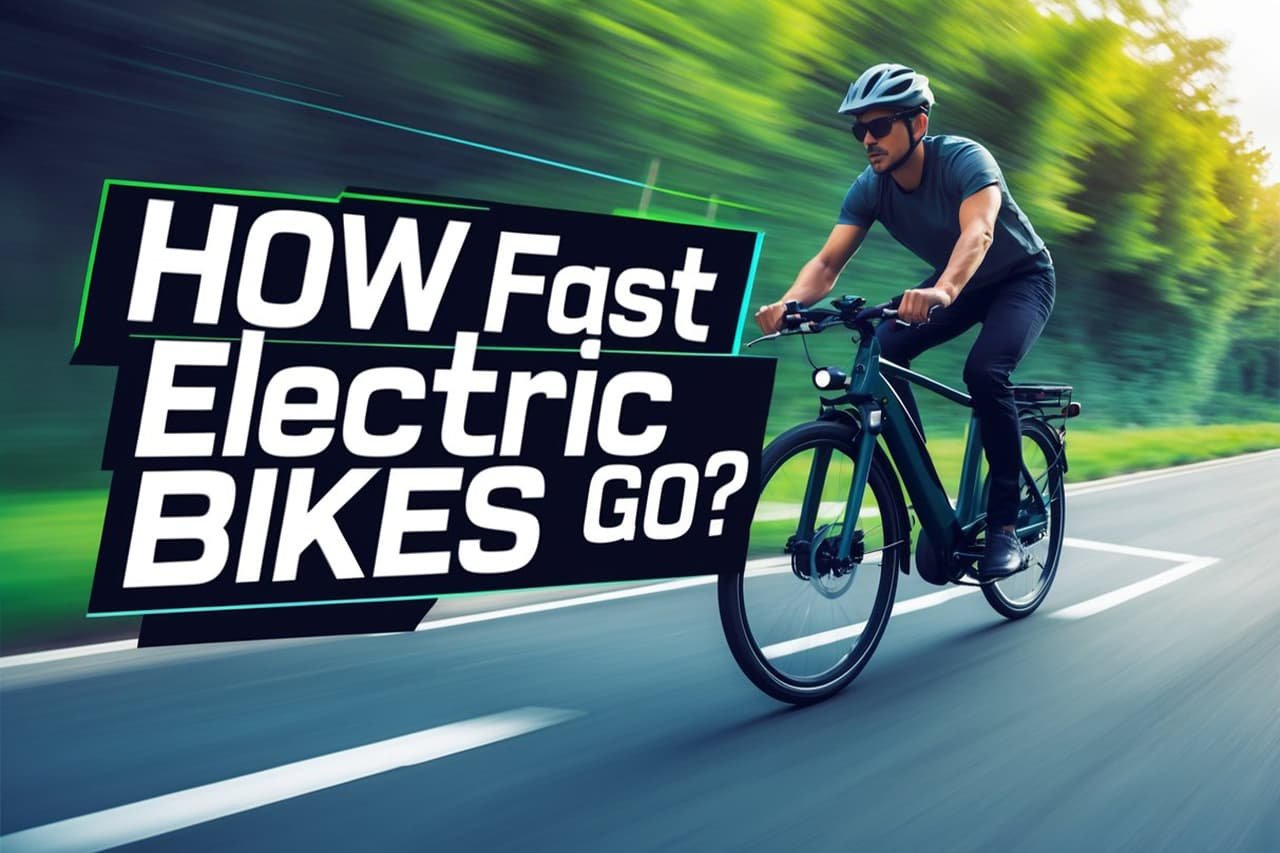
Hey there! So, I’ve been tossing around the idea of getting an electric bike lately—maybe for my commute, maybe just to zip around town and feel the wind in my hair. But here’s the big question that’s been nagging me: how fast do electric bikes go? I mean, are they speedy enough to cut through traffic, or are they more of a leisurely cruise? I decided to dig in deep and figure this out—not just for me, but for you too. Let’s take this journey together and uncover everything there is to know about e-bike speeds.
Spoiler alert: Electric bikes typically range from 15 to 28 mph (24 to 45 km/h) out of the box, depending on their class, motor power, and how much you’re willing to pedal. But with the right setup, terrain, and a little rule-bending, some can hit 50 mph or more! Stick with me—we’re about to explore the nitty-gritty, from motor wattage to legal limits, and even what real riders have to say. Ready to roll? Let’s go!
The Basics: What Determines E-Bike Speed?
Before we get too far, let’s lay the groundwork. When I started looking into this, I realized e-bike speed isn’t just one number—it’s a mix of factors. The motor, the bike’s class, your pedaling effort, the terrain, and even local laws all play a part. It’s like a recipe: tweak one ingredient, and the whole dish changes.
Most e-bikes you’ll find at a shop are designed to hit speeds between 15 and 28 mph. That’s fast enough to keep up with city traffic or blast down a bike path, but not so wild that you’re dodging cops—or common sense. But some enthusiasts push the limits way beyond that, and we’ll get to those speed demons later. For now, let’s start with the foundation: e-bike classes.
E-Bike Classes: The Speed Blueprint
Okay, so I’m scrolling through e-bike websites, and I keep seeing “Class 1,” “Class 2,” “Class 3.” What’s that all about? Turns out, these classes are like the rulebook for how e-bikes work—and how fast they’re allowed to go with motor help. Here’s what I found out.
Class 1: Pedal Power with a Boost
- How it works: The motor only kicks in when you pedal (that’s “pedal-assist”), and it stops helping at 20 mph (32 km/h).
- Speed vibe: Perfect for casual riders or bike path cruisers who want a little extra oomph without feeling like they’re cheating.
- Example: The Trek Verve+ 2 is a Class 1 e-bike with a 250W motor. It’ll get you to 20 mph with some pedaling, and if you’re fit, you can push past that on your own steam.
Class 2: Throttle It Up
- How it works: You get pedal-assist and a throttle, so you can hit 20 mph without pedaling at all. It’s like a mini-scooter with pedals.
- Speed vibe: Great for lazy days or quick bursts through traffic—zero effort, all fun.
- Example: The Rad Power RadCity 5 Plus rocks a 750W motor and throttle. Twist that grip, and you’re at 20 mph, no sweat.
Class 3: The Speedster
- How it works: Pedal-assist only, but it cranks up to 28 mph (45 km/h) before the motor cuts out.
- Speed vibe: Built for commuters or thrill-seekers who want to fly but still call it a “bike.”
- Example: The Specialized Turbo Creo SL is a Class 3 beast with a 240W motor (light but punchy). It’s sleek, fast, and hits 28 mph with a solid pedal effort.
Here’s a handy table to keep it straight:
| Class | Assistance Type | Top Motor Speed | Real-World Example |
|---|---|---|---|
| Class 1 | Pedal-assist only | 20 mph (32 km/h) | Trek Verve+ 2 (250W) |
| Class 2 | Throttle + pedal-assist | 20 mph (32 km/h) | RadCity 5 Plus (750W) |
| Class 3 | Pedal-assist only | 28 mph (45 km/h) | Specialized Turbo Creo SL (240W) |
But here’s the kicker: these are just the motor limits. Pedal harder or coast downhill, and you can go faster—your legs or gravity don’t care about class rules. That said, local laws can throw a wrench in things. In Europe, pedal-assist caps at 15.5 mph (25 km/h), and anything faster needs a license. Check your area’s regs (like the NHTSA’s e-bike guide) to avoid surprises.
So, classes set the baseline, but the motor’s where the real action happens. Let’s dig into that next.
Motor Power: The Engine Behind the Speed
Alright, motors—now we’re talking horsepower (or wattage, I guess). I kept seeing numbers like 250W, 750W, even 3000W. Does more watts mean more speed? Let’s break it down with some real examples and hard numbers.
How Wattage Ties to Speed
- 250W: Common in Europe due to strict laws, these motors top out at 15-20 mph (24-32 km/h). Think chill city rides. The Gazelle Ultimate C380 uses a 250W Bosch motor and hits 20 mph with ease.
- 500W: A step up, good for 20-25 mph (32-40 km/h). The Aventon Level.2 has a 500W motor and cruises at 25 mph with pedal-assist.
- 750W: Popular in the U.S., these can hit 25-28 mph (40-45 km/h). The Juiced RipCurrent S (750W) is a fat-tire beast that reaches 28 mph no problem.
- 1000W: Now we’re cooking—28-35 mph (45-56 km/h). The Super73 ZX with a 1000W motor can push 30 mph, though it’s often capped at 28 mph for Class 3 compliance.
- 1500W: How fast does a 1500W electric bike go? About 35-40 mph (56-64 km/h). The Ariel Rider Grizzly (dual 750W motors, 1500W total) hits 36 mph off-road.
- 2000W: Speeds climb to 40-45 mph (64-72 km/h). The HPC Scout Pro (2000W) can reach 45 mph, but it’s more dirt bike than e-bike.
- 3000W: How fast does a 3000W electric bike go? Up to 45-50 mph (72-80 km/h). The Stealth Bomber is a 3000W monster that screams to 50 mph—but it’s not street-legal anywhere I’d ride.
Here’s a beefed-up table with more detail:
| Motor Power | Typical Speed Range | Example Model | Notes |
|---|---|---|---|
| 250W | 15-20 mph (24-32 km/h) | Gazelle Ultimate C380 | Lightweight, efficient, Euro-friendly |
| 500W | 20-25 mph (32-40 km/h) | Aventon Level.2 | Solid all-rounder for commuters |
| 750W | 25-28 mph (40-45 km/h) | Juiced RipCurrent S | Great for hills and heavier riders |
| 1000W | 28-35 mph (45-56 km/h) | Super73 ZX | Often capped for legal use |
| 1500W | 35-40 mph (56-64 km/h) | Ariel Rider Grizzly | Dual motors, off-road power |
| 2000W | 40-45 mph (64-72 km/h) | HPC Scout Pro | Pushing e-bike limits |
| 3000W | 45-50 mph (72-80 km/h) | Stealth Bomber | Basically an electric motorcycle |
The Catch with Wattage
More watts can mean more speed, but most e-bikes have limiters to keep them legal—20 mph for Class 1 and 2, 28 mph for Class 3. A Bosch study showed that higher wattage really shines on hills or with heavy loads—it’s about torque as much as top speed. So, a 1000W motor might not go faster than a 750W on flat ground if both are capped, but it’ll feel stronger climbing.
I got curious and looked up some rider forums. One guy with a 2000W e-bike said, “It’s like strapping a rocket to your back—until the limiter kicks in.” Another swore by her 500W for daily rides: “It’s fast enough without scaring me silly.” Point is, wattage matters, but it’s not the whole story. Let’s see what else messes with speed.
Terrain and Rider Impact: The Real-World Test
So, I’m imagining myself riding an e-bike now. Flat road? Sweet. Steep hill? Uh-oh. Turns out, where you ride and how you ride make a huge difference.
Terrain Breakdown
- Flat Roads: This is e-bike paradise. A Class 3 bike hits 28 mph easy, and even a 250W motor feels zippy at 20 mph.
- Hills: Uphill slows you down—duh. A 250W motor might drop to 10-15 mph on a steep climb, while a 1000W can keep you closer to 20 mph. Downhill? You’re flying—40 mph or more if you’re brave and the motor’s off.
- Rough Stuff: Gravel, sand, or trails sap speed. My buddy tried his Lectric XP 3.0 (500W) on a sandy beach path and said it felt like “pedaling through molasses”—barely 15 mph.
- Wind: Headwinds are sneaky speed-killers. A 20 mph gust can knock 5-10 mph off your pace unless you’ve got a beefy motor to punch through.
Rider Factors
- Pedaling: On a Class 3 e-bike, a strong rider can push past 28 mph—think 30-35 mph with effort. I’m no Tour de France champ, but even I could add a few mph with a good cadence.
- Weight: Heavier riders (or cargo) slow things down, especially uphill. A 200-lb rider might lose 2-3 mph compared to a 150-lb one on the same bike.
- Fitness: If you’re pedaling hard, your stamina matters. A fit rider on a Class 1 e-bike can sustain 20 mph longer than me after a Netflix binge.
Check out this YouTube clip (E-Bike Speed Test Across Terrains)—it’s wild to see how a 750W e-bike handles pavement, dirt, and hills. Spoiler: pavement wins every time.
Tips to Max Your Speed
- Flat terrain: Stick to smooth paths or roads.
- Hills: Get a higher-wattage motor (750W+) or pedal like crazy.
- Wind: Draft behind a friend or lower your profile (tuck in!).
- Tires: Wider tires grip better but slow you down—go narrower for speed.
So, speed’s a team effort—bike, rider, and Mother Nature all pitch in. But what if you don’t want to pedal at all? Let’s talk throttles.
Speed Without Pedaling: Throttle Life
Okay, confession: sometimes I just want to kick back and let the bike do the work. That’s where throttles come in, and I had to know—how fast do electric bikes go without pedaling?
Throttle Basics
- Class 2 e-bikes: These bad boys let you hit 20 mph (32 km/h) with a twist or push of a throttle—no pedaling required. The RadRunner 2 (750W) is a classic example—20 mph, hands-free.
- High-Power Models: Some 1500W or 2000W e-bikes can throttle to 30-40 mph off-road, but they’re rare and usually not street-legal. The Surron X (2000W) can hit 40 mph on throttle, but it’s more dirt bike territory.
Pros and Cons
- Pros:
- Zero effort—perfect for tired legs or quick errands.
- Fun factor—feels like a scooter or motorcycle lite.
- Handy in traffic—start fast without pedaling.
- Cons:
- Battery hog—throttle-only cuts range by 30-50% (per Electric Bike Report).
- Legal limits—20 mph cap in most places, and some trails ban throttles.
- Safety—going 20 mph without pedaling takes focus (and good brakes!).
I talked to my cousin who owns a Class 2 e-bike. He said, “Throttle’s a lifesaver when I’m hauling groceries uphill—I feel like a superhero without the cape.” But he warned me: “Battery dies fast, so I save it for short bursts.” Makes sense—throttle’s a treat, not a lifestyle.
Legal Limits: How Fast Can You Legally Go?
Now, here’s where it gets tricky. I don’t want to buy a speedy e-bike and then get slapped with a fine. So, what’s the deal with laws?
U.S. Rules
- Class System: Most states follow the 20 mph (Class 1/2) and 28 mph (Class 3) limits for motor assistance. But where you can ride varies—Class 3 is often banned from bike paths (e.g., California’s rules).
- Beyond Classes: Anything over 28 mph with a motor might need a license or registration—like a moped. The Stealth Bomber at 50 mph? Definitely not a bike in the law’s eyes.
Europe and Beyond
- EU: Pedal-assist caps at 15.5 mph (25 km/h), and throttles are rare. Faster e-bikes are “S-pedelecs” (up to 28 mph), requiring helmets and plates.
- Australia: 200W motors max, 15.5 mph assist—super strict.
- Canada: Similar to the U.S., but 500W and 20 mph caps are common.
Practical Tips
- Check local laws: Use People for Bikes for state-by-state breakdowns.
- Helmets: Class 3 often requires them—better safe than sorry.
- Speed mods: Tempted to uncap your e-bike? Risky—fines, confiscation, or worse.
I read about a guy in New York who tweaked his 1000W e-bike to hit 35 mph. He got pulled over, fined $500, and had to walk home. Lesson: speed’s fun, but stay legal.
Battery Life and Speed: The Trade-Off
Here’s something I didn’t expect: going fast kills your battery quicker. It’s like flooring a car—great until you’re out of gas.
How It Works
- Throttle: Full throttle at 20 mph can halve your range—say, from 40 miles to 20.
- High Assist: Cranking pedal-assist to 28 mph drains faster than “eco” mode at 15 mph.
- Factors: Hills, wind, and weight amplify the drain.
Real Numbers
- Aventon Pace 500: 40-mile range at 15 mph (eco), drops to 25 miles at 25 mph (max assist).
- RadRover 6 Plus: 45 miles pedaling, 20 miles throttle-only.
Tips to Stretch It
- Mix it up: Pedal more, throttle less.
- Eco mode: Save juice for long rides.
- Charge smart: Top off before big trips.
I learned this the hard way borrowing a friend’s e-bike—blasted it at 28 mph and ran dry 10 miles from home. Pedaling a dead e-bike? Not fun.
E-Bikes vs. Traditional Bikes: Speed Showdown
How do e-bikes stack up against regular bikes? I used to ride a road bike, so this hit home.
Speed and Effort
- Traditional Bike:
- Average: 10-15 mph (16-24 km/h).
- Fit rider: 20 mph (32 km/h) with effort.
- Hills: Brutal slowdowns—5-10 mph uphill.
- E-Bike:
- Average: 15-28 mph (24-45 km/h).
- Effort: Low—motor does the heavy lifting.
- Hills: 15-20 mph with a good motor.
Why E-Bikes Win
- Consistency: No slowing down from fatigue or wind.
- Commute: 28 mph shaves time off a 10-mile ride vs. 15 mph.
- Fun: Less sweat, more smiles.
I’d take an e-bike over my old roadie any day—faster, easier, and I don’t show up to work drenched.
The Future of E-Bike Speed: What’s Coming?
What’s next for e-bike speeds? I’m no fortune-teller, but the trends are exciting.
Tech Advances
- Motors: Lighter, stronger—think 3000W in a 250W package.
- Batteries: Longer range, faster charging—100 miles at 28 mph?
- Smart Bikes: Auto-adjusting assist based on terrain or fitness (Bosch is already teasing this).
Speed Pioneers
- Delfast Top 3.0: 3000W, 50 mph—blurring the bike/motorcycle line.
- Concept Bikes: Some prototypes hit 60 mph, but they’re lab toys for now.
Predictions
Laws might loosen as e-bikes grow, letting us hit 35-40 mph legally. But safety gear and training will ramp up too. I’d love a 40 mph commuter—just not on a crowded bike lane!
Rider Stories: Speed in the Wild
I hit up some e-bike riders for their tales. Here’s the good stuff.
- Lila, 38, mom: “My Class 2 RadWagon hauls my kids at 20 mph on throttle. It’s a game-changer for school runs.”
- Evan, 25, adrenaline junkie: “My 2000W off-roader hits 45 mph downhill. Nearly wiped out once—worth it.”
- Priya, 50, retiree: “I stick to 15 mph on my 250W e-bike. Fast enough to enjoy, slow enough to chat with friends.”
Speed’s personal—what’s your flavor?
Final Thoughts
Wow, what a ride! Electric bikes can go anywhere from 15 to 28 mph stock, and way beyond if you’re a rule-breaker. Motors, terrain, laws, and you all shape the pace.
Whether you’re commuting at 28 mph or cruising at 20, there’s an e-bike for it. So, grab one, check your local rules, and hit the road—I’m right behind you!


